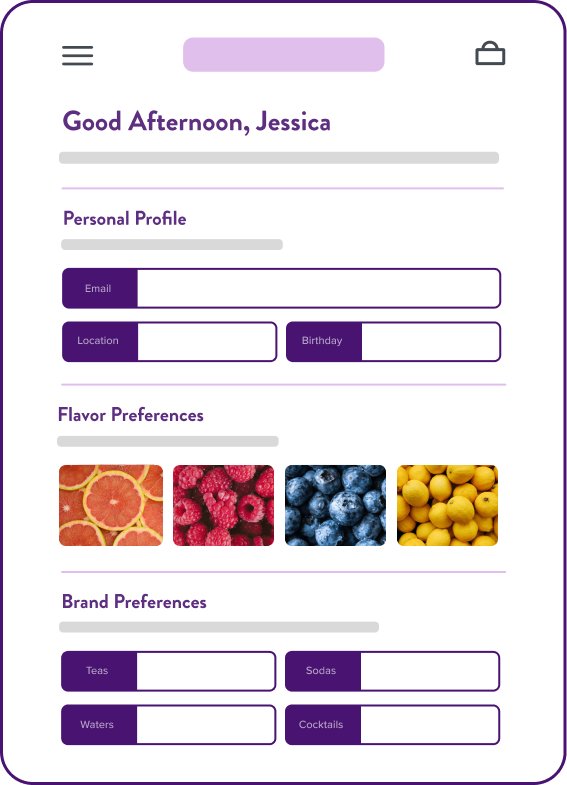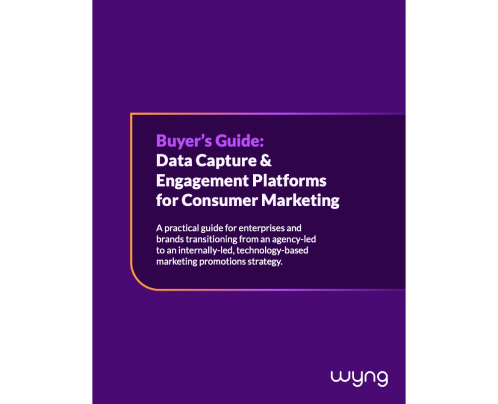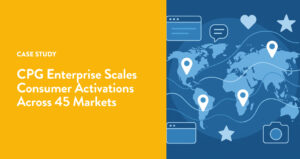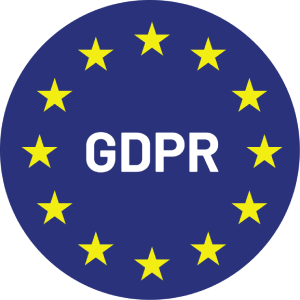There was a time when customers left decisions—and brand loyalty—up to retailers. Self-service stores didn’t appear on high streets until the 20th century. The choice of which product to grab off the shelves was up to store assistants.
But times have changed. Self-service has evolved into self-checkout and shopping online. And, while third-party retailers still control a large market share, CPG brands are free to build their own direct relationships with individual customers. They’ve turned to preference-based personalization, where consumers get a personalized experience based on their individual privacy choices.
We sat down with OLLY, the vitamin brand, and privacy platform Ketch to talk about balancing customer preferences with personalized experiences, privacy preferences, and targeted campaigns. Watch the webinar or read on to find out how CPG brands are taking ownership of the customer journey.
How the customer journey has changed
One reason why CPG brands are taking a new interest in the customer journey is that consumers have started making purchasing decisions differently. Customer journeys for daily shopping and impulse purchases used to be pretty simple. Someone identifies a need, maybe spots a billboard advertising a new product, then goes into a store and picks it off the shelf.
Today, it’s a lot more complicated. Consumer packaged goods (CPG) are now omnichannel. Customers research products and even purchase them online. They might interact with a brand through social media, ads, or email marketing before going near a store. And they expect a personalized experience at every step. “The touchpoints with consumers are proliferating,” explains Wendell Lansford, CEO and Co-Founder at Wyng. “Brands are looking to engage across many of those touchpoints.”
The key word there is engage. CPG brands have to do more than just show up. They have to offer interactive, real-time, targeted content and experiences… without compromising on data privacy. That’s where preference-based personalization comes in. For example, a customer who takes a product quiz from a beauty brand will expect that brand to follow up with an offer that’s relevant to their quiz results. But they’ll also want control over how their data is stored and used.
Sometimes, preference-based personalization means knowing when not to use data, too. An increasing number of brands record customer preferences so that people can opt out of potentially sensitive messaging, such as Mothers’ Day marketing campaigns. “You have to make sure that the data you’re collecting, you’re going to put to use in service of the customer,” Wendell sums up. Preference-based personalization is about serving customers: building loyalty through trust, rather than bombarding customers with intrusive marketing.
How CPG brands collect data and personalize their offers
Preference-based personalization has three essential steps. It starts with understanding what you need to create personalized messaging for your customers—the brand’s point of view. Next, you’ll need to take on the customer’s point of view by designing the customer journey. Finally, you’ll need a plan to keep refining your strategy and responding to changing consumer needs. Let’s zoom in on that process.
Step 1: Audit your data
Most CPG brands have small databases of customer information. That’s not necessarily a weakness: you don’t need a whole lot of data to start preference-based personalization.
“A single datapoint can go a very long way,” says Wendell. “It really starts with, What data as a brand do you need? What data is actionable to improve the customer experience?”
Start by inventorying the data you need to improve customer personalization. For many CPG brands, that can be as simple as customer email addresses.
“Starting with an email opt-in helps build an owned audience,” Wendell explains. “That data point’s super important for CPGs,” because it’s a direct connection to customers who might only know your products through third-party retailers.
In some cases, you might find that you already have actionable data—it just hasn’t been used correctly. A data audit can help you track down information that’s already stored about your audience. It’s also a good opportunity to check that you’re complying with the latest data legislation.

Step 2: Design the customer journey
Now you know what data you have and what data you need. You have the ingredients for preference-based personalization—but how are you going to use it?
Personalization makes a difference to every stage of the customer journey, from encouraging purchases to improving customer service and increasing positive reviews. Your goal is to collect relevant data, and offer value in return, at every interaction.
Here are ideas to incorporate preference-based personalization:
- Awareness: Tailor your top-of-funnel marketing campaigns to the media platforms that your target audience prefers. Some CPG brands have experimented with giving viewers a choice between two different versions of an ad, collecting information about their preferences in real time.
- Consideration: As customers begin considering your products, guide them through the choices available. For example, health and beauty brands can use quizzes to collect email addresses in return for personalized product recommendations.
- Decision: Once you have a way to contact customers—and you know something about their needs and preferences—they’ll expect you to follow up with personalized offers and recommendations. Be sure to offer them a way to manage their data permissions, so that customers still feel in control.
- Retention: When someone makes a purchase from your brand, it’s proof that they trust and value you. That’s an opportunity to collect more data and reward them all over again. Take this Hellmann’s proof of purchase sweepstakes, which gave away prizes to customers—while collecting more information through a registration form.
- Advocacy: Consumers are more likely to recommend brands after a personalized experience. You can magnify this effect by using personalization tools to reward them. For example, you could ask customers to leave product reviews in exchange for a reward that is personalized to them
Step 3: Maintenance
The whole point of preference-based personalization is that it works for consumers. When brands know their customers, they can encourage purchases and make the customer journey convenient. But what really wins customers over is a feeling of empowerment and control over their data.
That means preference-based personalization is never finished. Customers might change their personal data, change their minds about how much to share, or have changing preferences for how it’s used. For example, someone who appreciated Valentine’s Day offers in the past might not want to hear from you right after a break up.
Whenever something changes, customers should be able to let you know easily. You can do some of this maintenance work manually: for example, sending out emails to clean your list from time to time. However, the gold standard is a preference center where customers can view and manage all their own information.
Get started with preference-based personalization
CPG brands are no longer restricted to supermarket shelves. Now they can reach customers directly through omnichannel marketing—and be even more effective with targeted, personalized messaging. Consumers in 2025 are searching for a balance between convenient personalization and respect for their data privacy. You can square that circle with preference-based personalization, where you only collect relevant data that improves the customer experience.
Wyng is the interactive marketing platform that helps you collect data, tailor experiences, and build relationships with your customers. Talk to the experts in preference-based personalization.
This is the second post in our series on privacy and personalization for CPG brands. Check out the first article in the series, How CPG Brands Manage Privacy and Personalization in 2025.
The market is changing for CPG companies.
What are you doing to keep up?
Learn how Data Capture and Engagement Platforms are revolutionizing consumer engagement.







